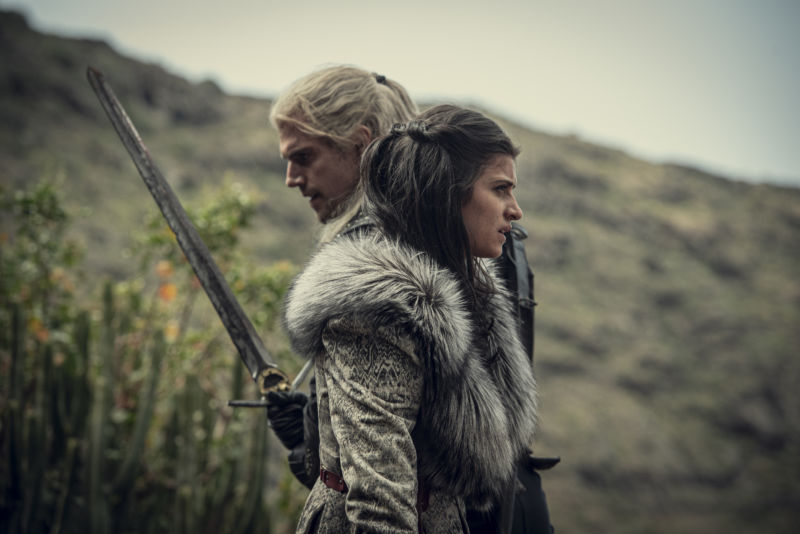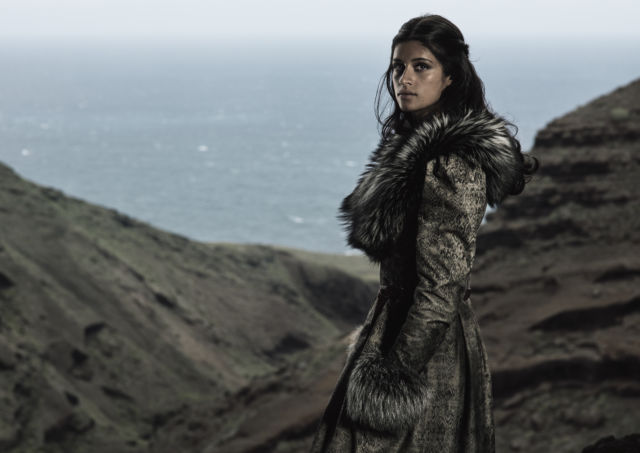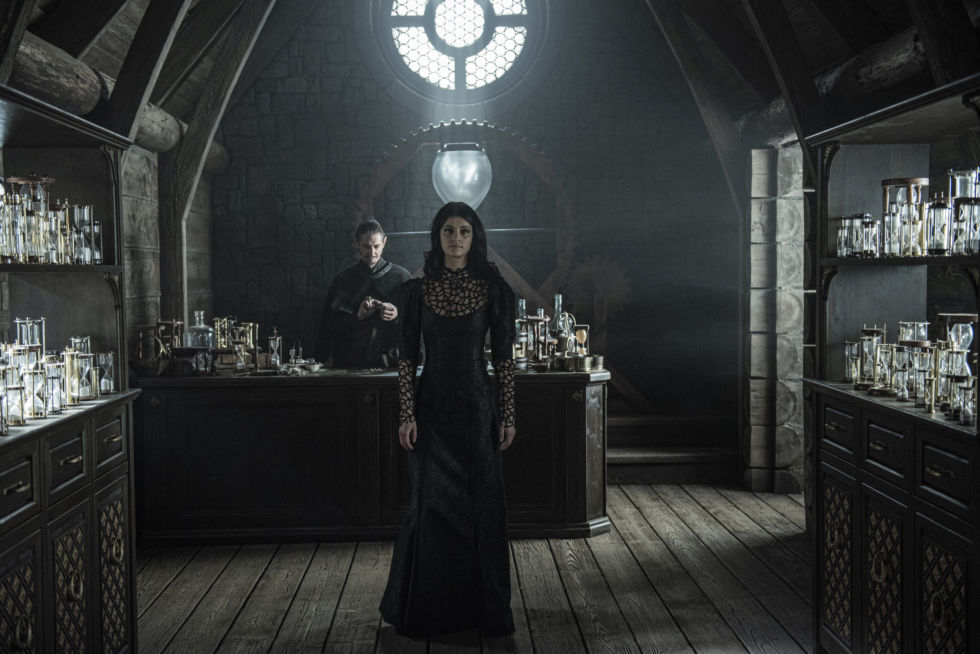The Witcher’s Netflix success: How three timelines somehow became cohesive
A great example of how a TV series' expansion beyond books, games can succeed.


Netflix's version of The Witcher exercises wiggle room with three types of source material. For the series' spread of main characters, that's good news.
Netflix
The Witcher is Netflix's surprise hit of the year, a series that seemed from the outset an unlikely-to-succeed adaptation greenlit in the foolish hope of finding the "next Game of Thrones." Despite middling reviews from critics, the show has become one of Netflix's 10 "most popular" shows of 2019, an honor it achieved with barely 11 days left in the year.
Even more surprising is its path to success. Netflix's The Witcher turned out to be a catchy, bingeable series not because of a blind faithfulness to the original work but by showrunner Lauren Schmidt Hissrich disregarding how the original material was structured. By sticking with the spirit of the stories, instead of following them letter-of-the-law style, The Witcher was far more successful than anyone could have imagined.
100 years, one Continent, three timelines
When Game of Thrones arrived in 2011, one of the ways it reeled in fans was its almost slavish allegiance to the source material. Entire segments of dialogue were lifted directly from the page. Major plot points came in the same order as they did in the books, including Ned Stark's death before the season finale. When the show added scenes out of order, such as Cersei and Jaime's scene over Jon Arryn's body in the pilot, they too were lifted directly from other parts of the novels.
A decade later, this direct transposing of what's on the page to the screen is par for the course, a been-there-done-that, as His Dark Materials is learning to its detriment. We've seen other creative ways around this expected narrative allegiance, particularly HBO's Watchmen jumping 30 years into its original story's future. But maybe a full-source remix doesn't have to be such a scary option.
That's why The Witcher's "three timelines" format matters. It gives the show a sense of sprawling narrative—not across continents, but across time. It covers nearly a century of history of the land known only as "the Continent," from the flashbacks to main character Geralt's childhood in the Season 1 finale to the fall of Cintra in its premiere. Much of Yennefer and Ciri's stories are more indirectly alluded to in the subtext than directly adapted from the page. But by pulling out those undercurrents and making them text, the show gets to fill in and shade the Continent's history in a way that many straightforward adaptations lose in bringing their stories to screen.
Short stories, long novels, epic games
This decision was likely borne of necessity because of the franchise's history. The Witcher straddles three real-world eras of fantasy storytelling, beginning in the late 1980s. During a time when male-centric, battle-heavy stories dominated the genre, Polish writer Andrzej Sapkowski began The Witcher as a series of short stories centered on Geralt of Rivia, a mutated human trained to serve as one of the Continent's monster exterminators. These were gathered into two collections, The Last Wish and Sword of Destiny, which were followed by full-length novels in the mid-1990s. Those stories centered on Geralt but also expanded to put a spotlight on Princess Cirilla of Cintra and the sorceress Yennefer of Vengerberg. In the mid-aughts, The Witcher franchise was then successfully adapted into a whopping three video games, based on the short stories.
As good as it is to have so many built-in fanbases, that meant Netflix had three distinct groups to please: the short story lovers, the novel fans, and gamers who expect a lot of gravelly voice work and monster-on-Witcher action.
This meant the show couldn't just start at the beginning and go in order. That would risk most of a season without Yennefer and maybe even two without Ciri, both of whom arguably become more important than Geralt by the time the fourth novel, The Tower of the Swallow, rolled around. To allow both characters to stand on their own required extrapolation, creating histories for them that were independent of Geralt, so audiences could get to know them. Say what you will about "strong women characters" emerging in mid-1990s fantasy, but Netflix's remixing of the story order does a much better job of telling these women's stories—and in organic, compelling fashion.
That doesn't mean Hissrich created everything from whole cloth. Much of Yennefer's time training at Aretuza, the magical academy for women, is extrapolated from things she says to Geralt or Ciri in the novels or observations Geralt makes about her. In the first three episodes, for instance, she's depicted as born with a hunchback—sourced from Geralt's observation at the end of their first short story together, "The Last Wish," that her shoulders are uneven, and somehow she must have used magic to straighten her spine. Likewise, the outline of Yennefer's early love affair with follow mage Istredd is extrapolated from a conversation Istredd has with Geralt in Sword of Destiny's "A Shard of Ice."
This is a huge departure from The Witcher books, where Yennefer is introduced initially as a supporting character and love interest of Geralt. The video games also don't treat her as a main protagonist; one cannot play the game as Yennefer. But by showing her story, instead of telling via exposition, she becomes a three-dimensional protagonist from the jump. Watching her navigate (or fight against) the politics involved within the Brotherhood of Sorcerers does a far better job in showing how and why Yennefer became who she is by the time Geralt meets her than merely seeing her from his point of view.
The character of Yennefer has never been playable in the popular Witcher video games, but the books spent years setting her up as a vital, main character. Netflix's version runs from there.
Netflix
To fit Yennefer and Ciri's solo stories in, the showrunner had to pick and choose which monster-versus-Witcher battles to stage. The show works in quite a few by having each episode contain a "Monster of the Week." The adventure with the Striga, for instance, was the first short story ever written, under the title "The Witcher," so skipping it was not an option. The show dedicates the "A-Plot" of an episode to it, one that includes direct visual references to the Striga adventure in the video game, to the point of restaging some of the game's cut scenes.
But, notably, its attached story doesn't come until Episode 3, after "The Butcher of Blaviken" (from "The Lesser Evil") and the elves (from "The Edge of the World"), both of which were later stories. Moreover, if one lays out the show's timeline, the Striga falls circa 1238. That puts it much closer to the show's present-day of 1263 (the date of Cintra's Fall and The Battle of Sodden Hill) than the scenes of Geralt's childhood or Yennefer's training to be a sorceress at Aretuza.
By putting the Striga encounter later, Hissrich ensures viewers have already gotten to know Geralt somewhat, including his of-the-time, anti-political "refuse to choose" attitude. This means his decision to choose to do the right thing in the Striga story packs a bigger emotional punch. It also gives the character more of a development arc than these mostly disconnected short stories provided.
By letting the audience piece together a far more expanded timeline, linking these stories so they feel like one sweeping epic, The Witcher stays far more faithful to the story than any video game-like shot framing. After all, what are video games, if not puzzles? What are doorstopper-sized fantasy stories like Game of Thrones but an exercise in discovering how all the characters will eventually encounter each other? By keeping the sense of having to solve something, Netflix's The Witcher creates a series as enjoyable as the original books and games, while making something wholly new for fans to consume.

